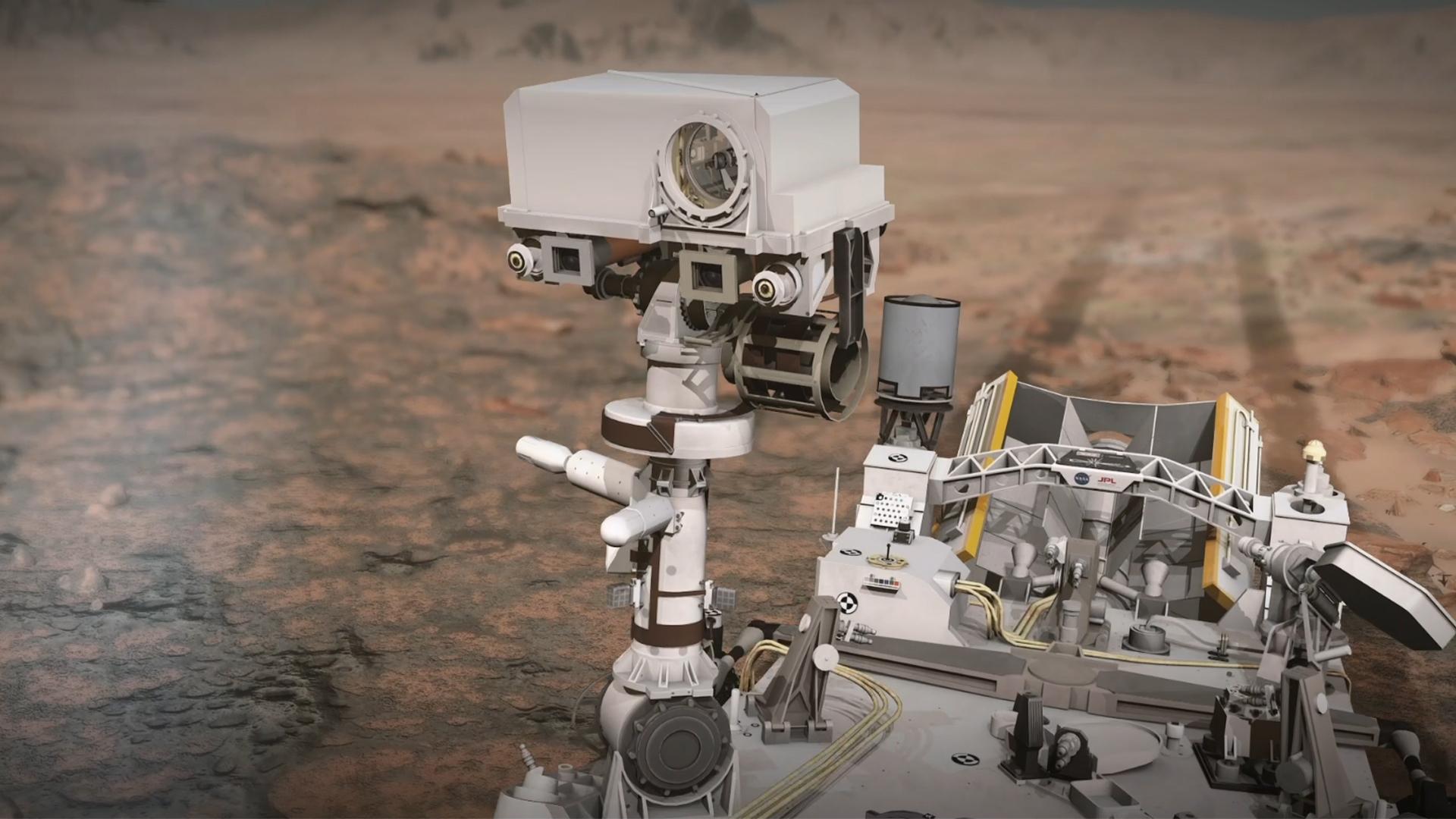The speed of sound on Mars is different from Earth, Perseverance rover finds
Lower-pitched sounds travel more slowly on Mars than higher-pitched ones, according to new data from NASA's Perseverance rover.
NASA's Mars rover Perseverance has found that sound travels much more slowly on the Red Planet than it does on Earth and behaves in some unexpected ways that could have strange consequences for communication on the planet.
Sound waves move more slowly through Mars' atmosphere than they do on Earth. This makes sense, as the speed of sound depends on a range of factors including the density of the material that the sound waves are traveling through (and, additionally, on some other variables including temperature). In Earth's atmosphere, at 68 degrees Fahrenheit (20 degrees Celsius), sound travels at 1,125 feet (343 meters) per second, but in the much denser medium of water, it moves at 4,856 feet per second (1,480 m/s), according to Science Alert.
Mars' barely-there atmosphere is over 100 times thinner than that of Earth, so sound moves much more slowly through it, traveling at just 787 feet per second (240 m/s), according to Science Alert.
But NASA's Perseverance rover, which landed on the Red Planet in February 2021, has discovered some oddities about sound on Mars that scientists didn't expect, according to a new study presented at the 53rd Lunar and Planetary Science Conference earlier this month.
Related: Perseverance rover's Mars samples now won't make it to Earth until 2033 at best

Measurements made by a team of scientists from Los Alamos National Laboratory, a U.S. Department of Energy facility in New Mexico, using a microphone on Perseverance's SuperCam instrument revealed that higher-pitched sound travels faster on Mars than lower notes, which is something that hasn't been observed anywhere else.
The scientists say this strange behavior could be explained by thermal fluctuations in the first 6 miles (10 kilometers) of Mars' atmosphere above the planet's surface. During the day, as the sun's rays hit and warm the Martian rock, convective drafts and turbulence stir this layer of Martian air, also known as the Planetary Boundary Layer. That changes the behavior of carbon dioxide molecules. Mars' atmosphere contains 96% carbon dioxide ,but the atmospheric pressure there is very low. (For comparison, Earth's much denser atmosphere contains only 0.041% of carbon dioxide.)
Get the Space.com Newsletter
Breaking space news, the latest updates on rocket launches, skywatching events and more!
"Due to the unique properties of the carbon dioxide molecules at low pressure, Mars is the only terrestrial-planet atmosphere in the solar system experiencing a change in speed of sound right in the middle of the audible bandwidth (20 Hertz to 20,000 Hertz)," the researchers wrote in a paper presented at the conference.
At frequencies above 240 Hertz, "the collision-activated vibrational modes of carbon dioxide molecules do not have enough time to relax, or return to their original state," the researchers said, which results in sound waves at higher frequencies traveling more than 32 feet per second (10 m/s) faster than the low-frequency ones.
That means that if you were standing on Mars, listening to distant music, you would hear higher-pitched sounds before you would hear the lower-pitched ones.
The team plans to continue using SuperCam microphone data to observe how things like daily and seasonal variations might affect the speed of sound on Mars. They also plan to compare acoustic temperature readings to readings from other instruments to try to figure out the large fluctuations, according to the statement in Science Alert.
The paper can be found on the conference website.
Follow Tereza Pultarova on Twitter @TerezaPularova. Follow us on Twitter @Spacedotcom and on Facebook.
Join our Space Forums to keep talking space on the latest missions, night sky and more! And if you have a news tip, correction or comment, let us know at: community@space.com.

Tereza is a London-based science and technology journalist, aspiring fiction writer and amateur gymnast. Originally from Prague, the Czech Republic, she spent the first seven years of her career working as a reporter, script-writer and presenter for various TV programmes of the Czech Public Service Television. She later took a career break to pursue further education and added a Master's in Science from the International Space University, France, to her Bachelor's in Journalism and Master's in Cultural Anthropology from Prague's Charles University. She worked as a reporter at the Engineering and Technology magazine, freelanced for a range of publications including Live Science, Space.com, Professional Engineering, Via Satellite and Space News and served as a maternity cover science editor at the European Space Agency.









